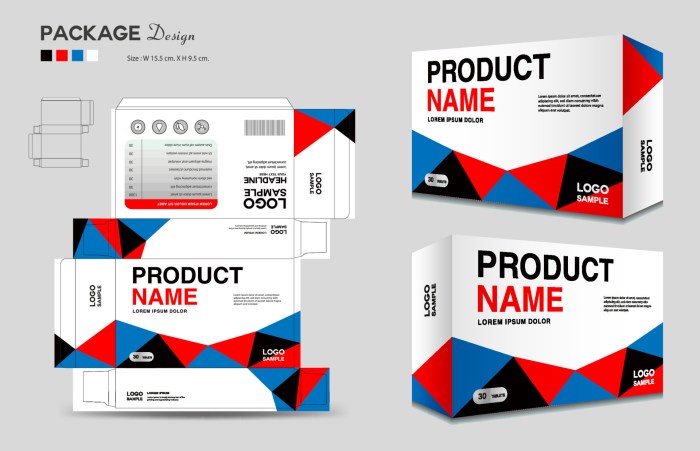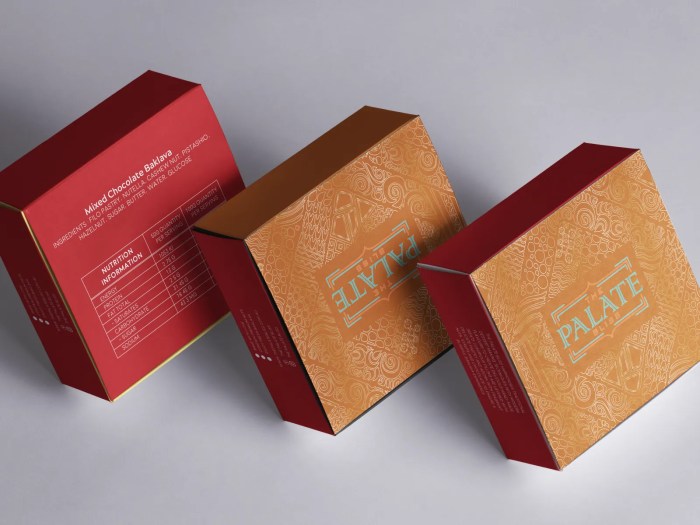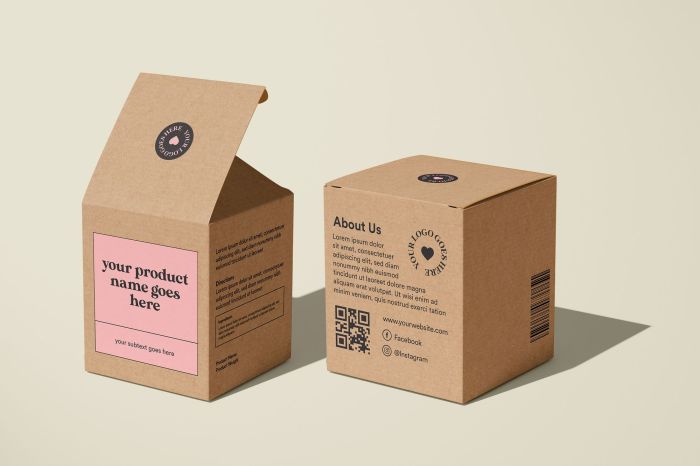Crafting the Perfect Box Design: A Comprehensive Guide
When it comes to product packaging, the design of the box plays a crucial role in capturing the attention of customers and conveying the essence of the brand. In this guide, we delve into the world of box design, exploring its impact on brand perception, customer experience, and ultimately, sales.
From the significance of effective box design to the latest trends and customization options, this comprehensive overview will provide valuable insights for businesses looking to elevate their packaging game.
Importance of Box Design

Effective box design plays a crucial role in product packaging as it serves as the first point of contact between the brand and the customer. A well-designed box not only protects the product but also creates a lasting impression on the consumer.
Here's how box design can impact brand perception and customer experience:
Enhancing Brand Perception
The design of the box can communicate the brand's identity, values, and quality to the consumer. A visually appealing and cohesive box design can help establish brand recognition and loyalty among customers. For example, Apple's minimalist and sleek packaging design reflects the brand's commitment to innovation and premium quality, enhancing the overall brand perception.
Improving Customer Experience
A well-thought-out box design can enhance the unboxing experience for customers, creating a sense of excitement and anticipation. Interactive elements, such as unique opening mechanisms or personalized messages, can make the unboxing process memorable and enjoyable. Brands like Glossier and Lush have successfully incorporated interactive elements into their box designs, elevating the overall customer experience.
Driving Sales
In addition to brand perception and customer experience, box design can also impact sales. An eye-catching and distinctive box design can attract consumers' attention on the shelves and differentiate the product from competitors. Limited edition packaging or special collaborations can create a sense of exclusivity and urgency, driving sales and increasing brand visibility.
For instance, the collaboration between Nike and Off-White resulted in highly sought-after sneaker boxes, contributing to the success of the partnership.Overall, the importance of box design goes beyond just packaging; it serves as a powerful tool for brand communication, customer engagement, and sales growth.
Elements of Box Design

When designing a box, several key elements need to be considered to ensure that the final product is not only visually appealing but also functional and sustainable. Elements such as color, typography, imagery, structural design, and materials all play a crucial role in the overall design of a box.
Color
Color choice is essential in box design as it can evoke certain emotions and convey brand identity. Different colors can create different moods and attract specific target audiences. It is important to choose colors that align with the brand's message and the intended purpose of the box.
Typography
The typography used on a box can greatly impact its readability and overall aesthetics. The font style, size, and placement of text should be carefully considered to ensure that important information is easily legible. Typography also contributes to the brand's visual identity and can help differentiate the box from competitors.
Imagery
Images and graphics can enhance the visual appeal of a box and communicate information effectively. Whether using product images, illustrations, or patterns, imagery should be carefully selected to complement the overall design and attract the target audience. High-quality and relevant imagery can make a box more memorable and engaging.
Structural Design
The structural design of a box not only affects its functionality but also contributes to its aesthetics. The shape, size, opening/closing mechanisms, and overall layout of the box should be designed with the end-user in mind. A well-thought-out structural design can enhance the unboxing experience, protect the contents, and make the box stand out on the shelf.
Materials
The choice of materials in box design is crucial for both sustainability and visual appeal. Sustainable materials such as recycled paper, cardboard, or biodegradable plastics are becoming increasingly popular due to their eco-friendly properties. The materials used can also affect the box's durability, weight, and cost, so it's important to strike a balance between sustainability and practicality.
Trends in Box Design
The world of box design is constantly evolving, with new trends emerging across various industries. One prominent trend is the shift towards more sustainable and eco-friendly practices in modern box design. This includes the use of recyclable materials, biodegradable packaging, and minimalist designs that reduce waste.
Another trend is the emphasis on unique and innovative box designs that not only protect the product but also serve as a branding tool for companies.
Eco-Friendly Practices in Box Design
In recent years, there has been a significant push towards eco-friendly practices in box design. Companies are increasingly opting for sustainable materials such as recycled cardboard, biodegradable plastics, and plant-based inks to reduce their environmental impact. This not only appeals to environmentally conscious consumers but also helps companies differentiate themselves in the market.
For example, brands like Patagonia and Lush have gained popularity for their commitment to sustainable packaging practices.
Innovative Box Designs
Innovation plays a key role in box design, with companies exploring new ways to create packaging that is both functional and visually appealing. One example of this is interactive packaging, where boxes feature elements like QR codes, augmented reality, or hidden messages that engage consumers and enhance the unboxing experience.
Another popular trend is the use of unconventional shapes and materials to stand out on store shelves. Brands like Apple and Tiffany & Co. are known for their iconic box designs that have become synonymous with their products.
Customization in Box Design
Customization options in box design play a crucial role for businesses looking to set themselves apart from competitors and create a unique brand identity. By offering personalized box designs, companies can tailor packaging to specific products, target audiences, or promotional campaigns, ultimately increasing brand visibility and customer loyalty.
Enhancing Customer Engagement
Customized box designs can significantly enhance customer engagement by creating a memorable unboxing experience. When customers receive a package in a uniquely designed box, it not only adds value to the product but also leaves a lasting impression. Personalized touches such as branded colors, logos, and messaging help reinforce brand recognition and build emotional connections with customers.
- Customized packaging can reflect the brand's personality and values, resonating with the target audience on a deeper level.
- Interactive elements like QR codes, personalized messages, or special offers inside the box can encourage customers to engage further with the brand.
- Unique box designs can generate social media buzz as customers are more likely to share their unboxing experiences online, increasing brand visibility and reach.
Creating Custom Box Designs
The process of creating custom box designs involves collaboration between businesses and packaging designers to bring the brand's vision to life. It typically includes:
- Understanding the brand identity, target audience, and product requirements to determine the design direction.
- Creating mock-ups and prototypes to visualize the final box design and make necessary adjustments.
- Choosing high-quality materials, printing techniques, and finishes to ensure the packaging reflects the brand's standards.
- Testing the custom box design for durability, functionality, and aesthetics to guarantee a positive unboxing experience for customers.
Final Wrap-Up

In conclusion, box design goes beyond mere aesthetics - it is a powerful tool that can shape how customers perceive a product and brand. By understanding the importance of each element and staying abreast of the latest trends, businesses can create memorable unboxing experiences that leave a lasting impression.
Elevate your packaging with thoughtful box design and stand out in a crowded market.
Common Queries
Why is box design important for product packaging?
Effective box design not only protects the product but also serves as a powerful marketing tool, influencing brand perception and customer experience.
What are the key elements to consider in box design?
Key elements include color, typography, imagery, structural design, and choice of materials, all of which contribute to the overall aesthetics and functionality of the box.
How can customization options enhance box design?
Customization options allow businesses to create unique and personalized box designs that can boost customer engagement and loyalty.




